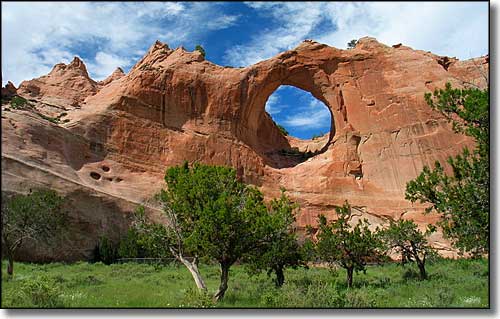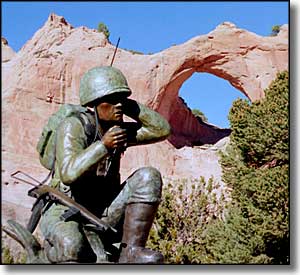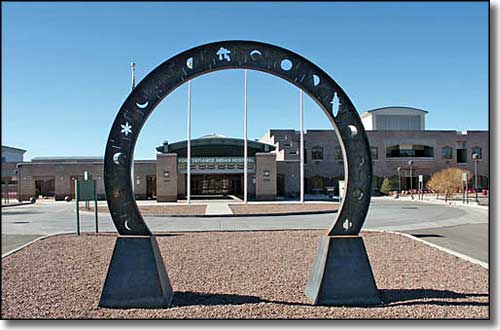
Window Rock, Arizona

Window Rock

Window Rock is the official seat of government (administrative capital and administrative center) of the Navajo Nation, the largest tribe of Native Americans in the United States. The site of Window Rock was chosen in 1936 by the then Commissioner of Indian Affairs, John Collier, for the planned Navajo Center Agency of the Bureau of Indian Affairs. Administrative buildings for the BIA, Public Health Service and the Navajo Tribe were then built of russet-colored sandstone that was quarried locally. Later on a Navajo Tribal Council House was built in Window Rock.
The Window Rock itself is important to the Navajo medicine men as the place where they go to get water for the Water Way Ceremony. About 1 mile south of the Window Rock are the Haystacks: rounded sandstone monoliths that resemble haystacks. Just south of that is the "Spring Under The Rock," the first stopping place for the Navajos who were leaving Fort Defiance in 1864 on the long walk to Fort Sumner, New Mexico.
In Window Rock is the Navajo Nation Council House, the Window Rock Fairgrounds and the Navajo Nation Museum. The Navajo Tribal Zoo was closed in 1999 (traditionalists objected to keeping wild animals from the Navajo Nation in captivity like that).

Fort Defiance Indian Hospital, nearby in Fort Defiance
Latitude: 35.6727°N
Longitude: 109.0621°W
Census Designated Place
Elevation: 6,830'
Education:
High School or Higher: 81.9%
Bachelor's Degree or Higher: 25.2%
Graduate or Professional Degree: 6.0%
2011 Cost of Living Index for Window Rock: 82.8
Estimated Median Household Income: $45,800
Estimated Median Home Value: $57,600
Median Resident Age: 27.0 Years
Major Industries:
Government, Educational Services, Health Care, Construction, Utilities, Professional Services, Lodging & Food Services, Finance & Insurance Services, Retail Services
Unemployed (March 2011): 16.5%
2010 Population Demographics
| Total Population | 2,712 |
| Males | 1,310 |
| Females | 1,402 |
| Population by Age | |
| Under 18 | 859 |
| 18 & over | 1,853 |
| 20-24 | 169 |
| 25-34 | 329 |
| 35-49 | 537 |
| 50-64 | 485 |
| 65 & over | 232 |
| Population by Ethnicity | |
| Hispanic or Latino | 48 |
| Non Hispanic or Latino | 2,664 |
| Population by Race | |
| White | 67 |
| African-American | 1 |
| Asian | 20 |
| Native American | 2,560 |
| Hawaiian or Pacific Islander | 6 |
| Other | 9 |
| Two or more | 49 |
